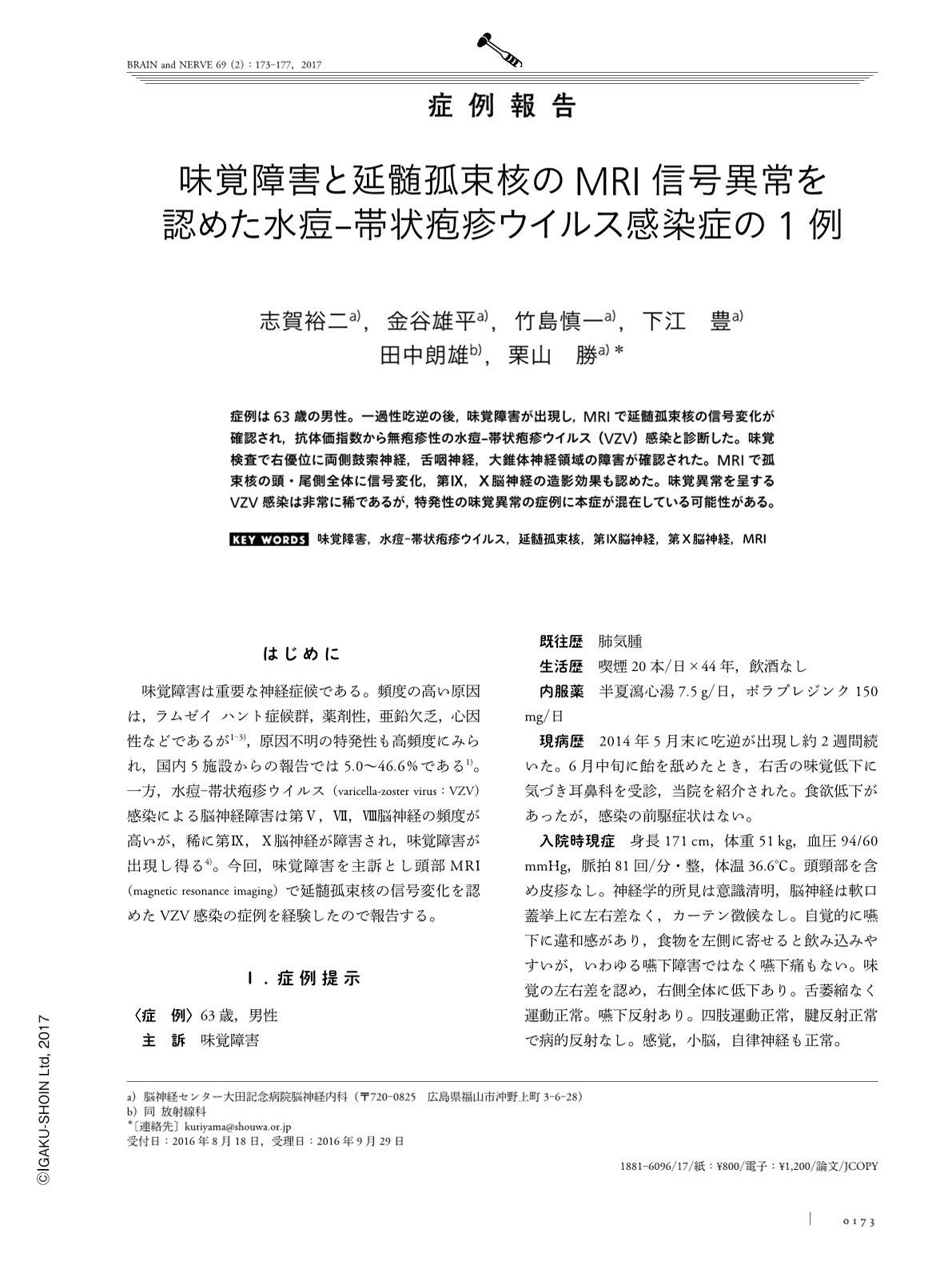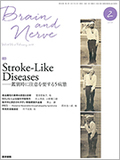Japanese
English
- 有料閲覧
- Abstract 文献概要
- 1ページ目 Look Inside
- 参考文献 Reference
症例は63歳の男性。一過性吃逆の後,味覚障害が出現し,MRIで延髄孤束核の信号変化が確認され,抗体価指数から無疱疹性の水痘-帯状疱疹ウイルス(VZV)感染と診断した。味覚検査で右優位に両側鼓索神経,舌咽神経,大錐体神経領域の障害が確認された。MRIで孤束核の頭・尾側全体に信号変化,第Ⅸ,Ⅹ脳神経の造影効果も認めた。味覚異常を呈するVZV感染は非常に稀であるが,特発性の味覚異常の症例に本症が混在している可能性がある。
Abstract
A 63-year-old man noticed hypogeusia after presenting hiccups for several days. He was serologically diagnosed with varicella-zoster virus (VZV) infection, but had no skin lesions typical of herpes (zoster sine herpete). Hypogeusia was confirmed by electrogustometry and the filter-paper disk method, which showed damage in the areas innervated by the cord of tympanum, glossopharyngeal nerve, and greater petrosal nerve. High signals in the nuclei of the solitary tract of the medulla oblongata and the enhancement of the bilateral intracranial segments of the cranial nerve IX and X complex were observed by magnetic resonance imaging (MRI). The signal changes in the nuclei of the solitary tract on MRI were seen for more than 2 months, and hypogeusia lasted for more than 7 months. Hypogeusia caused by VZV infection has rarely been reported; however, similar cases could have gone undiagnosed or underdiagnosed in patients with idiopathic hypogeusia.
(Received August 18, 2016; Accepted September 29, 2016; Published February 1, 2017)

Copyright © 2017, Igaku-Shoin Ltd. All rights reserved.


